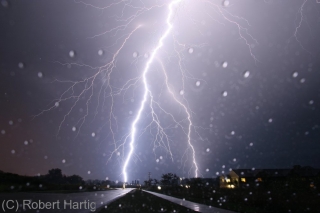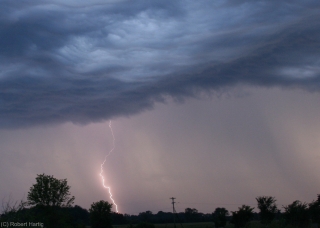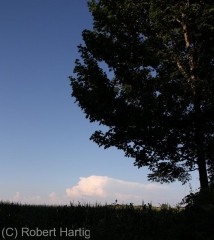Last night brought a nice electrical display to the Michigan skies, and my little town of Caledonia was smack in the center of the action.
Today looks to present still more possibilities. With a cold front sweeping in to kick up around 3,000 J/kg CAPE in the presence of 45 knots 0-6 km shear and adequate low-level helicity, southern Michigan is outlooked for a 5 percent tornado risk. It had to happen sometime. Looks like today could be play day for my area on toward the southeast part of the state.
But that’s for later this afternoon, and this post is about last night with its lightning extravaganza. I had initially set up shop in a parking on the edge of town off of 100th Street, but when the action appeared to be migrating south of me, I dropped down six miles to Middleville. Eventually I wound up
back in Caledonia just a couple hundred yards from where I had initially positioned myself. That’s where I got the dramatic shot of the big bolt at the top of this post, as well as the rest of the night-time photos.For that matter, the earlier photos were also taken in Caledonia. The color in those photos is pretty true. I was captivated by the bluish hue and undulating, textured look of the clouds. Really beautiful, and quite something to see.




























